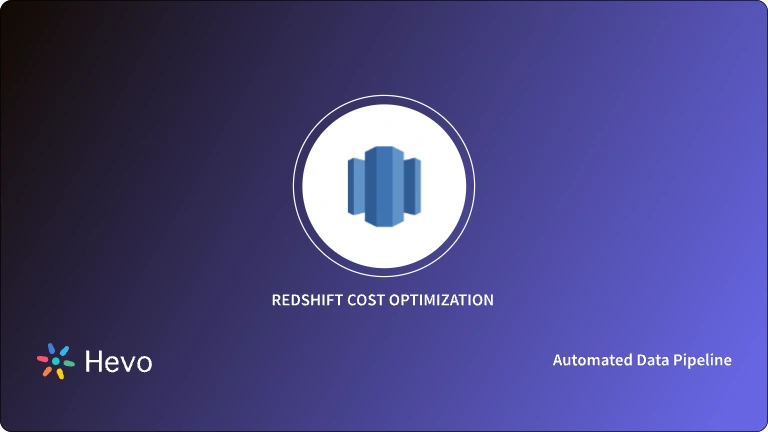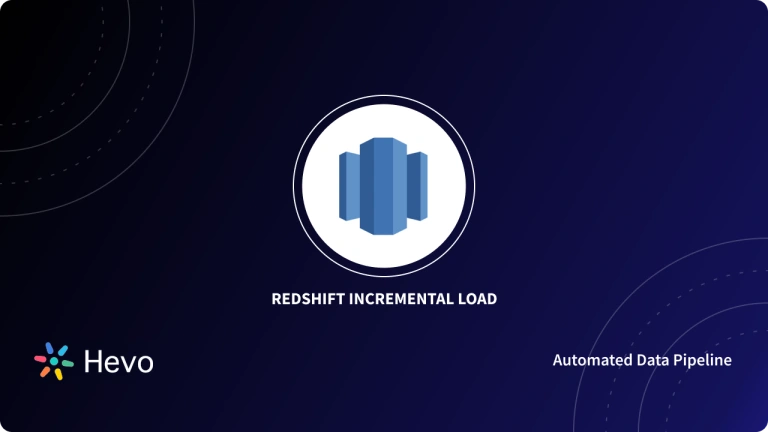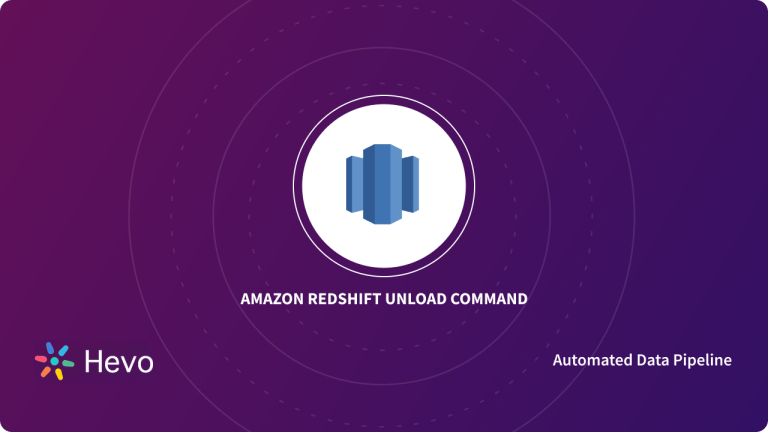Team members of every organization often share data among themselves to promote unified decision-making about products and consumers. With traditional Data Warehouses, Data Sharing can be stressful and time-consuming. Users often have to move data individually from a central source to each recipient, thus wasting time meant for more productive activities.
Good news! The Amazon Redshift Data Sharing feature has come to change the story. Redshift Data Sharing allows users to display data created in a single cluster to multiple clusters without any data movement. As efficient as this feature may seem, it can be a little difficult to maneuver. Today, you’ll learn how to use Amazon Redshift Data Sharing for your specific use case. So, read along to gain more insights about Redshift Data Sharing.
Table of Contents
Introduction to Amazon Redshift
Amazon Redshift is a large data warehouse for holding large quantities of data which helps organizations to make efficient business decisions. This service stores databases in the form of clusters to allow users to query their data easily.
Amazon Redshift supports integration with a variety of business tools and SQL-based clients. This helps businesses that subscribe to the platform analyze their data without moving them from the warehouse.
In addition, users of Amazon Redshift enjoy the opportunity to scale their storage space. When you register on Redshift, you only get about a few gigabytes of storage capacity, but you can expand the space up to several petabytes as your business grows.
Hevo’s fully managed platform simplifies the process of transferring data into Amazon Redshift while ensuring your data is ready for analysis.
Why Opt for Hevo with Amazon Redshift?
- Reliable Data Management: Hevo’s resilient architecture ensures secure processing of your data, eliminating the chance of loss.
- Effortless Schema Management: Hevo automatically identifies the schema of incoming data and aligns it with Redshift, making schema management hassle-free.
- Easy-to-Use Interface: With its user-friendly interface, Hevo is accessible even for newcomers, facilitating quick setup and efficient data operations.
Monitor your data flow into Amazon Redshift and keep track of its status at any time with Hevo.
Get Started with Hevo for FreeKey Features of Amazon Redshift
Let’s explore some of the key features offered by Amazon Redshift that makes it a leader in the industry.
1) Secure Cloud
Amazon Redshift is one of the services that run on the Amazon Cloud (Amazon Web Services). Access to the Redshift platform is protected by Identity and Access Management (IAM) accounts in AWS. The system also encrypts your database clusters with hack-proof codes such that non-owners cannot decrypt the data.
In addition, you can run your Amazon Redshift account on a private Cloud. Amazon Redshift grants access to private cloud users with its Virtual Private Cloud (VPC) environment.
2) Fast Accurate Results
One of the notable strengths of Amazon Redshift is its speed. This system can query huge amounts of data in seconds. Amazon Redshift achieves this level of performance with the help of two elements: Massive Parallel Processing design (MPP) and Columnar data storage.
Massive Parallel Processing Design is an element that shares the data query workload across the system’s multiple nodes. As such, each node only processes a portion of the data. All the nodes in Amazon Redshift work at the same time. So, querying data on the storage service takes only a section of the usual time required for analyzing data in traditional data warehouses.
Columnar design reduces the level of storage capacity a database occupies by distributing the data into columns. When a user’s account memory only contains minimal data, the Amazon Redshift system works faster.
3) Cost-Effective
Amazon Redshift offers efficient data storage at low costs, unlike many traditional warehouses that require users to pay millions of dollars to set up their storage space. In fact, you don’t need to pay any upfront costs to activate or maintain your Redshift account.
That’s not all, the system will only charge you for the amount of space you use, and you get only a slight hike on your Redshift usage costs when expanding your storage capacity.
Introduction to Amazon Redshift Data Sharing
Amazon Redshift Data Sharing is a feature that allows Redshift users to share data across multiple clusters without needing to move it from the producer cluster. This feature supports various data formats like tables and schemas.
Redshift Data Sharing is useful to teams who want to maintain communication with other teams. Customers who like to stay up-to-date with a company’s data may also enjoy the Amazon Redshift Data Sharing feature.
Understanding Working of Amazon Redshift Data Sharing
Amazon Redshift Data Sharing is made up of 2 main clusters: the Producer Cluster and the Consumer Cluster. The Manager of the Producer cluster builds a data share that will house the shared data. This administrator then adds all necessary data to the Datashare and selects consumer clusters that receive the shared data.
A Consumer cluster may be situated within the same AWS account as the Producer cluster or belong to a separate AWS account. Now, the administrator of the Producer cluster can share the data.
When the shared data appears in the consumer cluster, its Manager creates a database from the Datashare object to help users access the data. After building the database, the Administrator of the Consumer cluster grants access to selected users within the cluster. Any user who gets the shared data can run queries on it with analytic tools. In addition, these users can even compare the shared data with local data to create cross-database queries.
Commands to Work with Amazon Data Sharing
Now that you’ve explored the basics of Amazon Redshift Data Sharing, you can start learning how to use the feature. There are certain processes Redshift users must master to share data effectively. These processes are:
Create Datashare
The first step to sharing data is to create a datashare. You can create a datashare by entering the following syntax within an Amazon Redshift database:
CREATE DATASHARE datashare_name
[[SET] PUBLICACCESSIBLE [=] TRUE | FALSE ];The parameter, [ [SET] PUBLICACCESSIBLE, states whether you can share the data with clusters that are publicly accessible.
Alter Datashare
This function allows you to add or remove objects from a datashare. The syntax for this process is:
ALTER DATASHARE datashare_name ADD TABLE table_name;
Or
ALTER DATASHARE datashare_name REMOVE TABLE table_name;Desc Datashare
This shows all the objects added to a datashare. The syntax for Desc Datashare is:
DESC DATASHARE datashare_name [ OF [ ACCOUNT account_id ] NAMESPACE namespace_guid ]- Account_id indicates the account where the datashare was created.
- Namespace_guid is a code number for the datashare.
Show Datashare
Use this function to view the inbound and outbound datashares within a cluster. Here’s how to request Amazon Redshift to show datashares:
SHOW DATASHARES [ LIKE 'namepattern' ]- Namepattern refers to the similar characters that all the requested datashares have.
- LIKE is an optional clause that matches the name pattern with the description of the datashares within an account.
Drop Datashare
This deletes a datashare object from a cluster. The syntax for Drop Datashare is:
DROP DATASHARE datashare_name;Amazon Redshift Data Sharing Use Cases
Now that you have gained a basic understanding of Amazon Redshift Data Sharing capability, below are some of the use cases listed where this feature is commonly used.
- Organizations share data from their main ETL (Extract, Transform, and Load) cluster to several Analytic clusters to distribute data workload and usage costs.
- Data providers also share Analytics data occasionally with their customers.
- Business teams often share data to help them make sound decisions.
- Redshift users share data across development, test, and production environments of applications.
Conclusion
You have discussed what Amazon Redshift is. You have also explored Amazon Redshift Data Sharing and how it works. You can now start using the data sharing feature on Amazon Redshift. Follow the steps in this guide to explore the Amazon Reshift Data Sharing feature to the benefit of your business.
In case you want to automate the real-time loading data from various Databases, SaaS Applications, Cloud Storage, SDKs, and Streaming Services into Amazon Redshift, Hevo Data is the right choice for you. You won’t have to write any code because Hevo is entirely automated and with over 150 pre-built connectors to select from, it will provide you with a hassle-free experience.
Want to take Hevo for a spin?
Sign Up and experience the feature-rich Hevo suite first hand. You can also have a look at the unbeatable pricing that will help you choose the right plan for your business needs.
Share your experience with Amazon Redshift Data Sharing in the comments section below!
FAQs
1. What is datashare in Redshift?
Datashare in Amazon Redshift allows you to share live data across different Redshift clusters and accounts without needing to copy or move data. It enables seamless collaboration and data access for analytics across various teams and services.
2.What are the limitations of Redshift data sharing?
Limitations include:
1) Data can only be shared between Redshift clusters in the same AWS Region.
2) Data sharing is limited to specific object types, such as tables and schemas.
3)Changes in the shared data schema may affect data access.
3. What are the different data sharing options?
The different data sharing options in Redshift include:
1) Intra-Cluster Sharing: Sharing data between different schemas within the same Redshift cluster.
2) Cross-Cluster Sharing: Sharing data between separate Redshift clusters, allowing for cross-account access.
3) Data Shares: Creating a data share that specifies which tables or schemas to share, making it accessible to other clusters.








